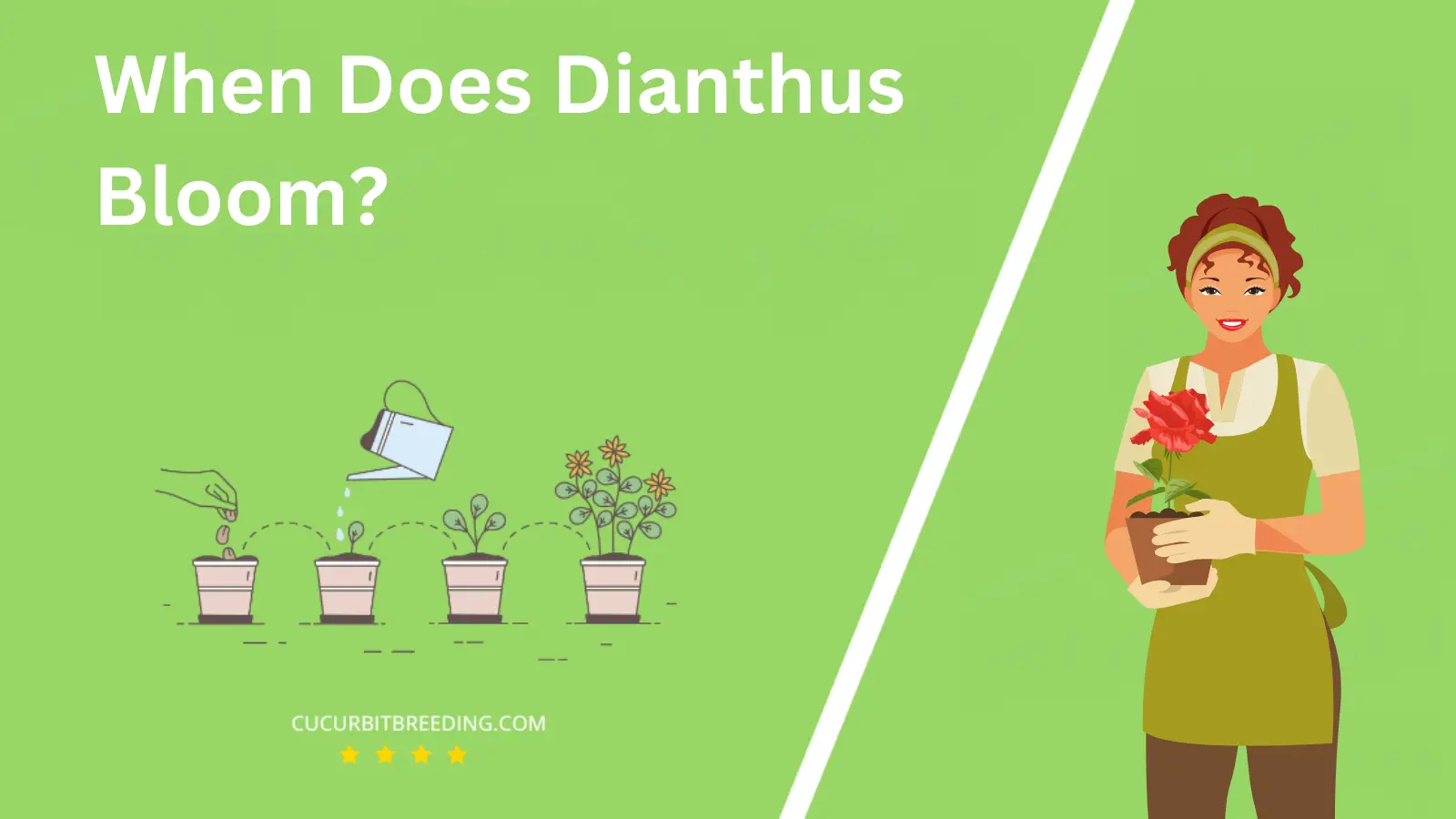
There’s something simply enchanting about Dianthus, a versatile perennial that adds a vibrant splash to any garden. But when does Dianthus bloom? This question is often on the minds of gardening enthusiasts and flower lovers alike.
Understanding their blooming period is crucial to maintain their aesthetic appeal and ensuring their healthy growth. So, buckle up as we delve into the fascinating world of Dianthus.
When Does Dianthus Bloom?
Dianthus, also known as ‘Pinks’ or ‘Carnations,’ typically bloom from late spring to early summer. However, the exact timing can be influenced by factors such as the specific variety, location, and climate. Some types of Dianthus are even able to produce a second flush of blossoms in the fall if the summer’s heat was not too intense. So, the general blooming period for Dianthus is from late spring to early summer, with the possibility of a second bloom in fall.
| Stage | Description |
|---|---|
| Germination | Spring (March-June) |
| Growth | Spring and summer (March to August) |
| Blooming | Spring to early summer (March-June) |
| Dormancy | Winter (December-February) |
How Long Do Dianthus Bloom?
The blooming period for Dianthus plants typically lasts from late spring to early fall. However, the exact duration can vary depending on the specific species and growing conditions. With optimal care and maintenance, some varieties can bloom again in late summer or early fall after the initial bloom.
How Light Affects Dianthus Blooms?
Light plays a crucial role in the blooming of Dianthus plants. Dianthus plants require full sun, which translates to at least six hours of direct sunlight each day, for optimal blooming. The sunlight promotes photosynthesis, which is essential for the growth and development of the plant, including the production of vibrant and healthy blooms.
Additionally, the quality, duration, and intensity of light also influence the blooming process. Inadequate light can lead to sparse blooming, whereas intense light can potentially scorch the plants. Therefore, while ensuring adequate sunlight, care should be taken that the plants are not exposed to harsh midday sun, especially in hot climates.
It’s important to note that variations in light conditions can also impact the color and size of the dianthus blooms. Therefore, regulating the light exposure of these plants can help in managing their blooming cycles and overall appearance.
Will Dianthus Bloom in the First Year You Plant It?
Yes, Dianthus plants can bloom in their first year after planting, particularly if they are planted early in the growing season. However, the size and abundance of the blooms may not be as substantial as in the following years. The full blossoming potential of Dianthus is usually seen in the second year and thereafter.
Will Dianthus Bloom Every Year?
Yes, Dianthus does bloom every year. This plant is classified as a perennial, meaning that it has a long lifespan and can bloom year after year. However, it’s worth noting that the exact lifespan and blooming patterns may vary depending on the specific type of Dianthus and the growing conditions.

Should I Deadhead Dianthus Blooms?
Yes, you should deadhead Dianthus blooms. Deadheading, or the process of removing faded or dead flowers, encourages the plant to produce more blooms. It also helps the plant to focus its energy on new growth rather than seed production. This process also keeps the Dianthus looking neat and tidy.
Top Reasons a Mature Dianthus May Stop Flowering

A mature Dianthus may stop flowering due to several reasons. Firstly, inadequate sunlight can affect its blooming as Dianthus generally require about 4-5 hours of direct sunlight daily.
Secondly, improper watering may lead to non-flowering. Both overwatering and underwatering can stress the plant and hinder its ability to bloom. Dianthus prefer a soil that is evenly moist but not waterlogged.
Thirdly, lack of proper nutrients can also cause a Dianthus to stop flowering. They need well-draining soil rich in organic matter and benefit from regular feeding with a balanced fertilizer.
Lastly, poor pruning practices can affect flowering. Regular deadheading, or removal of faded flowers, encourages the plant to produce more blooms.
Overall, a combination of ideal sunlight, proper watering, adequate nutrients, and appropriate pruning is crucial for the Dianthus to bloom.